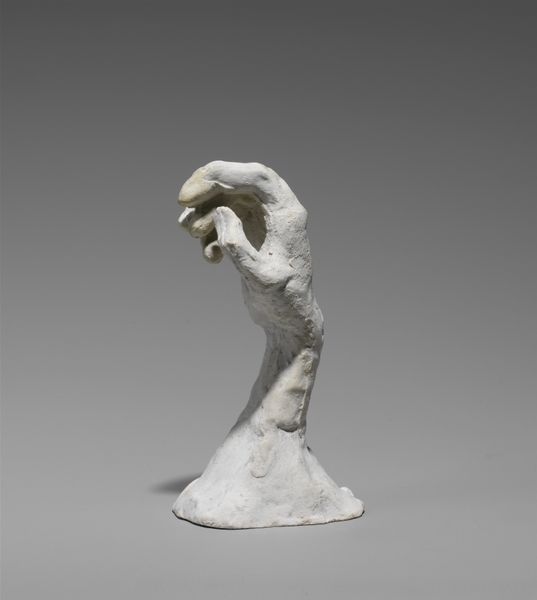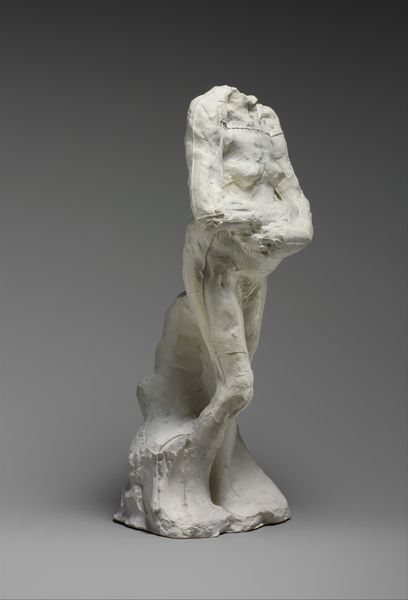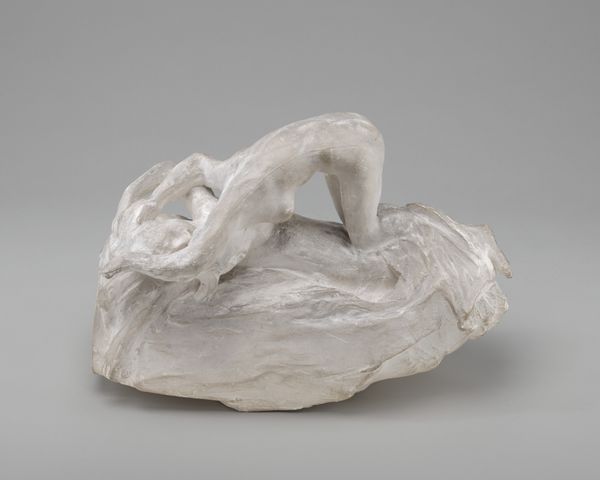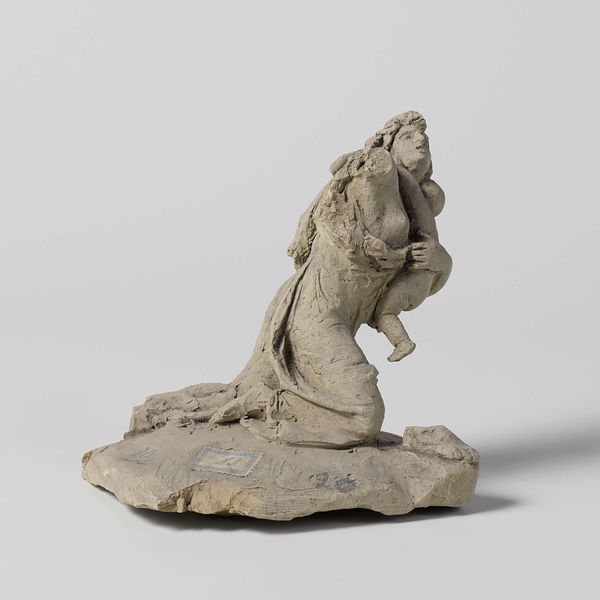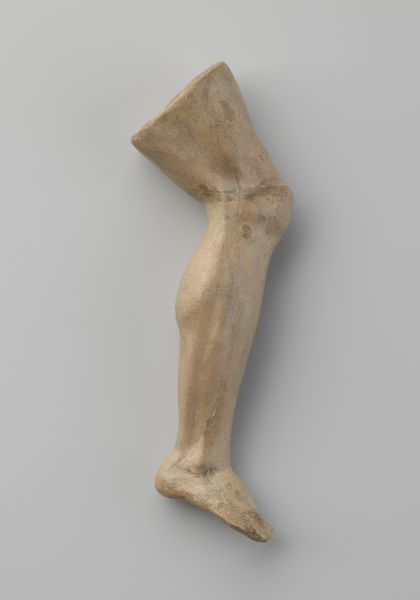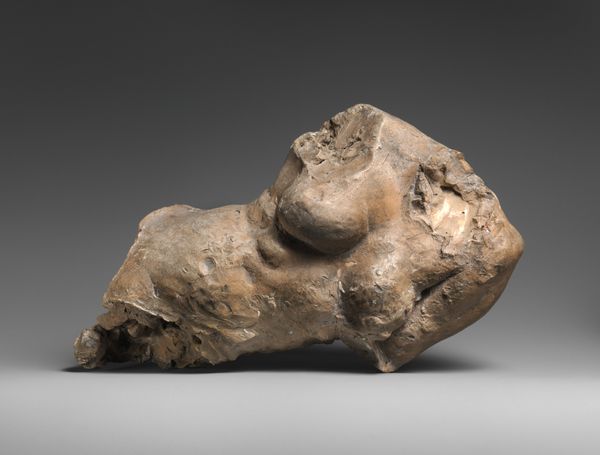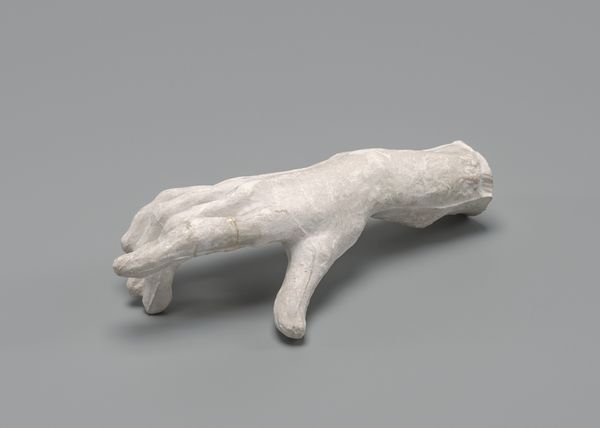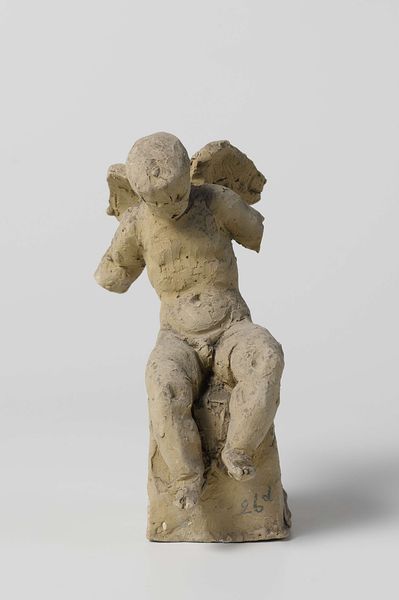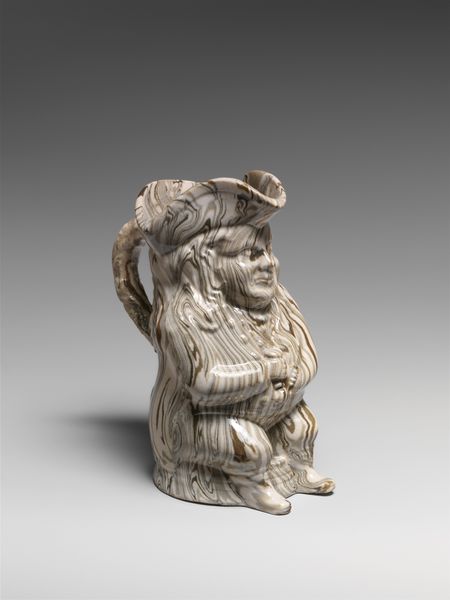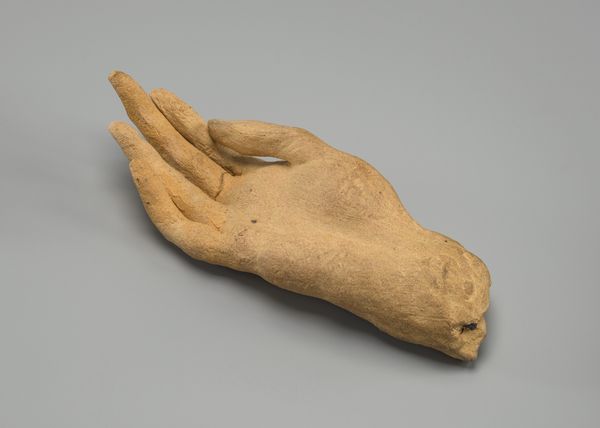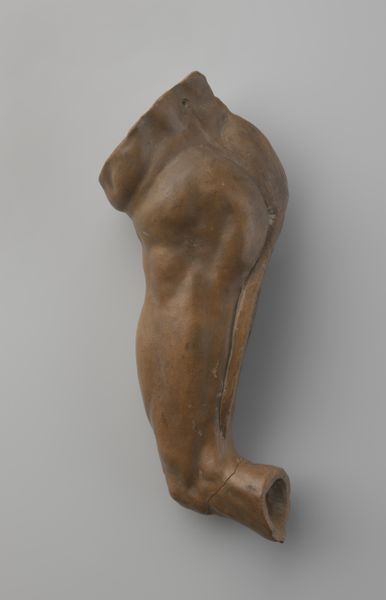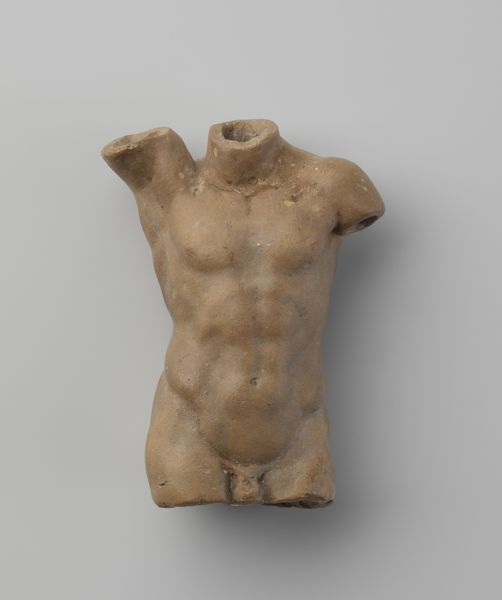
bronze, sculpture
#
portrait
#
bronze
#
sculpture
#
decorative-art
#
realism
Dimensions: 6 3/8 × 2 1/2 × 3 3/4 in. (16.2 × 6.4 × 9.5 cm)
Copyright: Public Domain
Curator: We are looking at "Study of a Hand" by Auguste Rodin, a bronze sculpture currently housed in the Metropolitan Museum of Art. Editor: Its scale strikes me immediately. There’s a fragmentariness to it; it feels monumental despite, or perhaps because of, being only a part. Curator: Hands, in Rodin's practice, become these concentrated sites of meaning, even operating independently of a larger figure. Think of the hand as an instrument, the seat of action and intention. Editor: True, it has a tactile quality almost urging one to read its semiotics; it isn't simply a depiction of flesh and bone, but instead a lexicon of form. Look how Rodin coaxes movement from the rigid medium through sharp contrasts of shadow and light. Curator: Precisely! Rodin imbued it with psychological depth; notice the somewhat clenched pose. A slight tension suggesting restrained power, maybe even suppressed emotion. Editor: A micro-drama encapsulated in a single form. Considering its incompleteness and monochromatic nature, what symbolical load does it convey beyond the surface realism? Curator: The fragmented nature hints at a focus on process over the definitive. A constant negotiation of possibilities rather than settled conclusions about being human. It’s meant for continuous probing. Editor: Perhaps that is why this Study of a Hand resonates so strongly with modern sensibilities. It rejects totalization and fixed meaning, it favors contingency and nuanced complexity instead. Curator: Definitely! An emblem that leaves so much open to conjecture reminds us about our potential and freedom to craft meaning continuously in our surroundings. Editor: Indeed. I came in ready to scrutinize composition and form, and walked away considering questions of power and purpose!
Comments
No comments
Be the first to comment and join the conversation on the ultimate creative platform.
